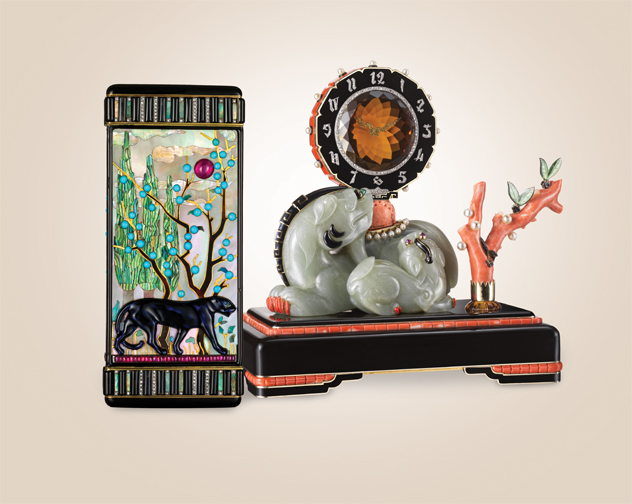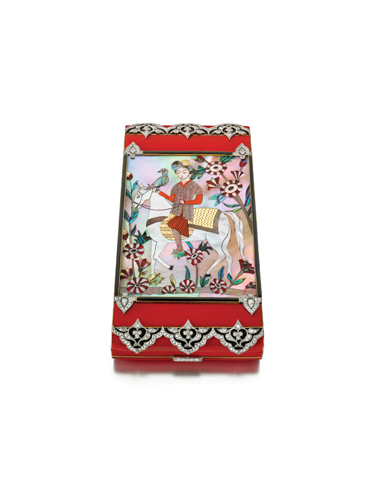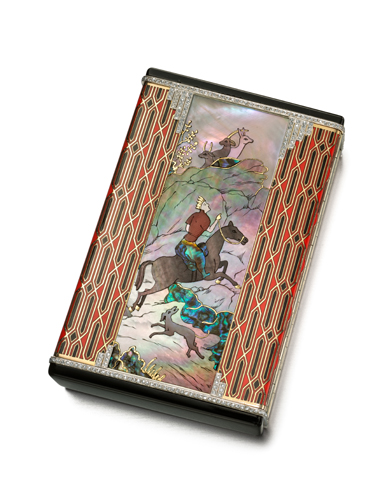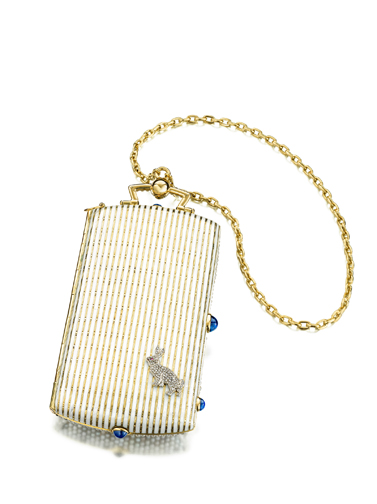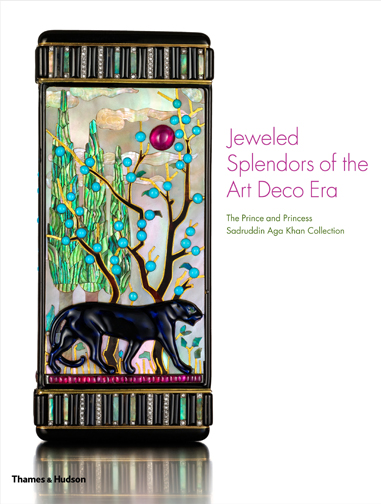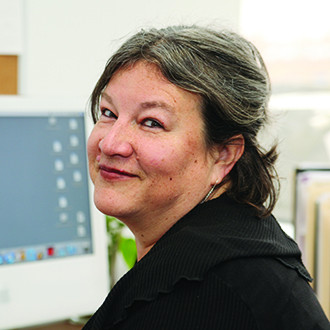Our last issue, an exploration of design, included an advance look at “The Jazz Age: American Style in the 1920s.”
Opening April 7 at Cooper Hewitt, Smithsonian Design Museum in Manhattan, it promises to be on many a must-see list.
But Deco fans will want to note that a companion show also opens at Cooper Hewitt that day, a dazzling gem — pun intended — called “Jeweled Splendors of the Art Deco Era: the Prince and Princess Sadruddin Aga Khan Collection.”
The exhibition will feature more than 100 examples of luxury cigarette and vanity cases, compacts, clocks and other objects in the Carnegie Mansion’s Teak Room, an exotic beauty itself. The pieces will represent the intricate work being done during the period of 1910 to 1938 by the premier jewelry houses of Europe and America, including Cartier, Van Cleef & Arpels, Lacloche Frères, Boucheron and Bulgari.
And fitting right into this issue’s theme, the show will feature a number of designs depicting animals, from the sleek panther pacing across a vanity case from Cartier to the horse and bird on another case, this one produced by Lacloche Frères.
As Caroline Baumann, Cooper Hewitt’s director, says in advancing the show, “A collection with a rich and storied history, these magnificent works represent the foremost craftsmanship of their era. With exotic motifs exquisitely formed with the finest jewels, metals and precious stones, these boxes, timepieces and jewelry also are virtuosic demonstrations of artistic expressivity and mastery of ancient techniques. Concurrently on view in association with ‘The Jazz Age: American Style in the 1920s,’ this exhibition offers an unprecedented opportunity to see these objects in the context of the dramatic societal and technological changes impacting the world during this pivotal moment in early modern history.”
“Jeweled Splendor” draws from the personal gifts Prince Sadruddin Aga Khan (1933—2003) gave to his wife, Catherine (b. 1938). Born in Paris, Prince Sadruddin was the son of Sir Sultan Mahomed Shah Aga Khan and Princess Andrée Aga Khan. Dedicated to public service, he spent nearly 40 years at the United Nations, including a position as the United Nations High Commissioner for Refugees from 1966 to 1978. In addition to his humanitarian work, Prince Sadruddin was passionate about art, culture and environmental issues.
Those with a keen interest in the subject will also want to invest in “Jeweled Splendors of the Art Deco Era: The Prince and Princess Sadruddin Aga Khan Collection” ($75, hardcover, 256 pages), which will be published April 11 by Thames & Hudson. It’s a stunning companion that offers the chance to explore the collection further and makes quite an elegant keepsake.
In the foreword, Princess Catherine Aga Khan, the original (and lucky) recipient of these beauties, writes fondly of the more than 100 objects in the collection: “Each had a personality of its own and each was more richly colored and imaginative than the last.”
Those visiting the exhibition — or savoring the book — will no doubt agree with her sentiment.
For more, visit cooperhewitt.org or thamesandhudsonusa.com.

